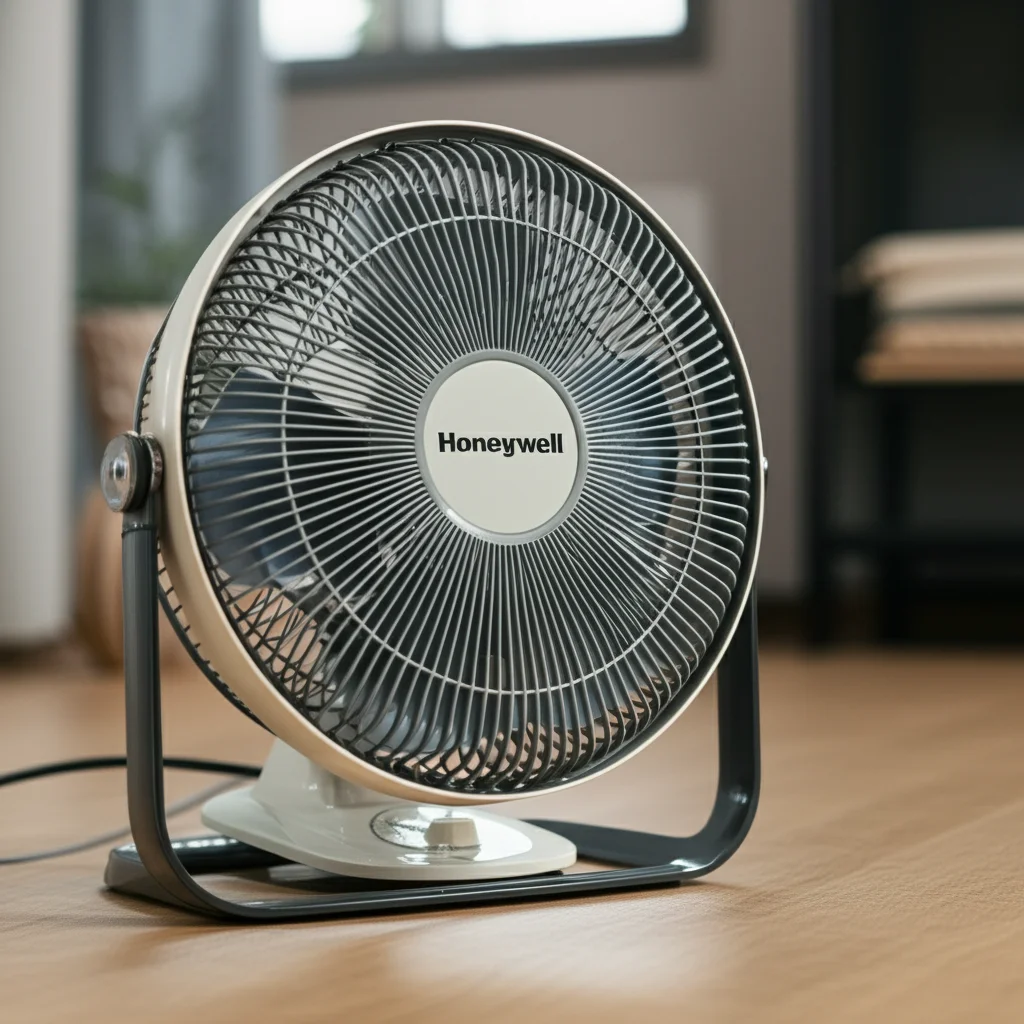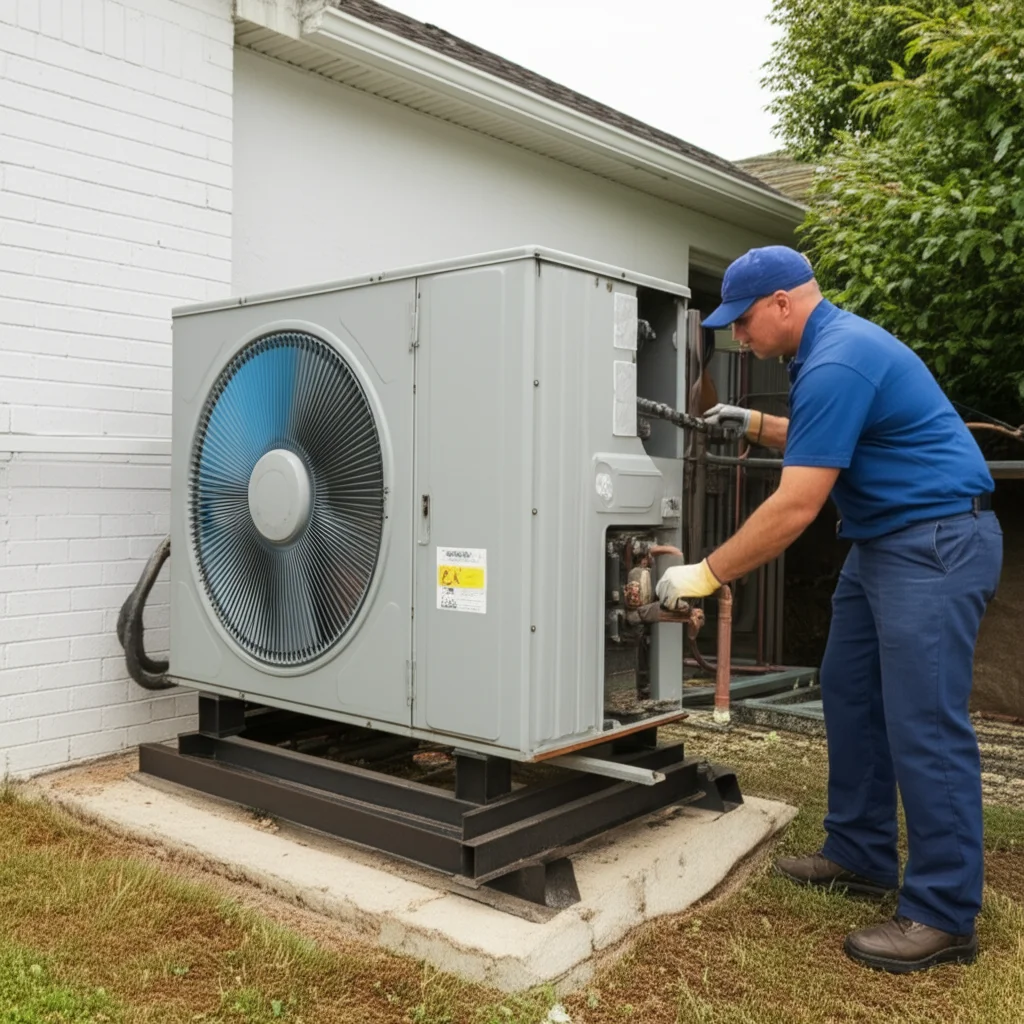· Davia Murnell · Home Maintenance · 19 min read
How To Clean Light Bulbs

Restore Brilliance: How to Clean Light Bulbs Safely
Have you ever noticed your room feeling a little dimmer than usual? It might not be your imagination. Over time, light bulbs collect dust, grime, and even tiny insect remnants. This buildup significantly blocks the light output. Learning how to clean light bulbs can quickly restore your home’s brightness. It also improves energy efficiency and extends the life of your bulbs. We will walk you through the simple, safe steps to make your light sources shine brightly again. This guide covers essential safety precautions, necessary tools, and specific techniques for different bulb types. Get ready to brighten up your living space today!
Takeaway:
- Always turn off power and let bulbs cool completely before touching them.
- Use a soft, dry microfiber cloth for basic dust removal.
- For stubborn grime, lightly dampen a cloth with distilled water and a tiny amount of mild soap or white vinegar.
- Handle bulbs gently, especially incandescent and CFL types.
- Ensure bulbs are completely dry before returning power.
To clean light bulbs, first turn off the power and allow them to cool. Gently wipe dust and dirt away with a soft, dry microfiber cloth. For persistent grime, use a slightly dampened cloth with distilled water or a mild cleaning solution, then dry thoroughly before reconnecting power.
Why Cleaning Light Bulbs Matters for Your Home
Keeping your home clean goes beyond surfaces and floors. Light bulbs, often overlooked, gather a surprising amount of dust and dirt. This accumulation significantly impacts the light they produce. A dirty bulb cannot emit its full intended brightness. Cleaning light bulbs is a simple task that offers multiple benefits.
Dust acts like a tiny, opaque shield over your bulb’s surface. Even a thin layer can reduce light output by 20% or more. This means your rooms appear dimmer, making activities like reading or cooking harder. Restoring the original brightness instantly improves visibility and the ambiance of any space. It brings that fresh, clean feeling to your entire home.
Dirty bulbs also work harder to produce the same amount of light. This increased effort uses more electricity. Regular cleaning helps your bulbs operate at peak efficiency. This can lead to noticeable energy savings over time. It is a small change that contributes to a more energy-efficient home. You will feel good knowing you are cutting down on energy waste.
Moreover, the heat generated by a light bulb can cook dust onto its surface. This “baked-on” grime can shorten the bulb’s lifespan. Keeping bulbs clean helps them dissipate heat more effectively. This reduces the risk of overheating. A cooler bulb lasts longer. This saves you money on replacement costs. Regular cleaning ensures your bulbs serve you faithfully for years to come.
Finally, clean light bulbs simply look better. They enhance the overall cleanliness and aesthetic of your home. Think about a chandelier or a decorative lamp. These fixtures are meant to be highlights. Dust and dirt dull their sparkle. A quick clean makes them shine as they should. This small detail can make a big difference in how your home feels.
Safety First: Essential Precautions Before You Begin
Before you even think about touching a light bulb, safety must be your top priority. Light bulbs, especially when hot or powered, pose electrical and burn risks. Taking the right precautions ensures a safe and effective cleaning process. Never rush this step.
The very first rule is to turn off the power. Do not just flip the light switch. Go to your electrical panel and turn off the circuit breaker for the fixture you are cleaning. This eliminates any risk of electric shock. Flipping the wall switch only interrupts the circuit; the bulb still has potential for current. Taking this extra step ensures complete safety.
Next, allow the light bulb ample time to cool down. Light bulbs, particularly incandescent and halogen types, get extremely hot during operation. Touching a hot bulb can cause severe burns. Wait at least 15-30 minutes after turning off the power. Even energy-efficient LEDs and CFLs can be warm. Test the bulb gently with the back of your hand before handling it directly.
Always wear protective gloves when cleaning light bulbs. Cotton or latex gloves protect your hands from dirt and cleaning solutions. They also prevent oils from your skin from transferring to the bulb. Skin oils can leave fingerprints. These fingerprints can burn onto the bulb over time. They can also create hot spots that shorten the bulb’s life.
Use a sturdy step ladder or stool if the light fixture is out of reach. Never stand on wobbly chairs or precarious surfaces. Maintain three points of contact with the ladder at all times. Have someone spot you if possible. Falls can cause serious injuries. Ensure your footing is stable before reaching for any bulb.
Be extremely careful when handling different types of bulbs. Incandescent and halogen bulbs are made of delicate glass. They can easily shatter if dropped. Compact Fluorescent Lamps (CFLs) contain a small amount of mercury. If a CFL breaks, follow specific cleanup procedures for mercury spills. LEDs are generally more durable but still require gentle handling. Understand the bulb type before you start cleaning.
Gathering Your Arsenal: Tools and Cleaning Solutions
Having the right tools and cleaning solutions makes the job of cleaning light bulbs simple and safe. You likely have most of these items already in your home. Avoid harsh chemicals. They can damage the bulb’s finish or its internal components. Our goal is to clean gently and effectively.
A soft, dry microfiber cloth is your primary tool. These cloths are excellent at trapping dust and dirt without scratching surfaces. They are also lint-free, which is crucial for light bulbs. Lint left behind can quickly attract more dust. Always start with a dry cloth for initial dusting.
For more stubborn grime or sticky residues, you will need a gentle cleaning solution. Distilled water is ideal because it leaves no mineral deposits or streaks. Tap water can leave behind residue that becomes visible when the bulb heats up. Mix a very small amount of mild dish soap with distilled water. About one drop per cup of water is usually enough.
White vinegar is another excellent, natural cleaning agent. It is particularly effective on grease and film. You can create a cleaning solution of equal parts distilled water and white vinegar. This mixture works wonders on glass surfaces. For more tips on cleaning glass with vinegar, check out our guide on how to clean glass with vinegar. Remember to use these solutions sparingly.
For specific stains like fingerprints or tougher grease on glass bulbs (not plastic-coated LEDs or CFLs), rubbing alcohol can be effective. Apply a tiny amount to a clean cloth. Never spray alcohol directly onto the bulb. Ensure the bulb is completely cool before using alcohol. Always test in an inconspicuous area first if you are unsure.
Consider a small, soft brush, like a clean paintbrush or a makeup brush, for intricate areas. These are perfect for dusting around the base of the bulb or inside decorative fixtures. They can reach spots your cloth cannot. Make sure the brush bristles are soft enough not to scratch the bulb’s surface.
Finally, have a clean, dry towel or a second microfiber cloth ready. This is for drying the bulb completely after any damp cleaning. Ensuring the bulb is thoroughly dry is critical before reinstallation and turning the power back on. Moisture and electricity do not mix.
Step-by-Step Guide to Cleaning Incandescent and Halogen Bulbs
Incandescent and halogen bulbs are among the most common types found in homes. They produce light using a filament that heats up. These bulbs are delicate and get very hot. Cleaning them requires a gentle touch and careful attention to detail. Follow these steps to clean light bulbs effectively.
First, ensure the power to the fixture is off at the circuit breaker. This is vital for your safety. Let the bulb cool down completely. A hot incandescent or halogen bulb can cause severe burns. Wait at least 15-30 minutes after turning off the light.
Carefully unscrew the bulb from its socket. Hold the bulb by the glass part, not the metal base. The base can become corroded or loose over time. Support the fixture with your other hand if it feels unstable. Place the bulb on a soft, clean surface to prevent rolling or breakage.
Begin by dry dusting the entire surface of the bulb with a clean, soft microfiber cloth. This removes the majority of loose dust and cobwebs. Wipe gently from the base to the top, rotating the bulb as you go. Be especially careful around the filament, as excessive pressure can damage it. My grandmother always said, “Gentle hands make gentle work.”
If there is stubborn grime or fingerprints, slightly dampen a different clean microfiber cloth. Use distilled water mixed with a tiny drop of mild dish soap, or the water and white vinegar solution. Wring the cloth out thoroughly until it is barely damp. You do not want any excess moisture dripping. For insights on streak-free cleaning, our guide on how to clean glass without streaks might be helpful.
Gently wipe the surface of the bulb with the damp cloth. Use light, circular motions. Pay attention to any smudges or sticky spots. Avoid getting any moisture near the metal screw base of the bulb. This area houses the electrical connections. Moisture here can cause issues when you reinsert the bulb.
Immediately dry the bulb completely with a separate, clean, dry microfiber cloth. Ensure there is no moisture left on the glass or the metal base. Any remaining dampness can cause a short circuit or even shatter the bulb when it heats up. Give it a few extra minutes to air dry after wiping.
Once the bulb is thoroughly dry, carefully screw it back into the socket. Do not overtighten it, as this can damage the socket or the bulb base. Restore power at the circuit breaker. Enjoy the renewed brightness!
How to Clean LED and CFL Light Bulbs
LED (Light Emitting Diode) and CFL (Compact Fluorescent Lamp) bulbs are energy-efficient alternatives to traditional incandescent bulbs. While they save energy, they still collect dust and need cleaning. Their construction differs from incandescent bulbs, requiring slightly different handling. Understanding these differences helps you clean light bulbs safely and effectively.
Cleaning LED Bulbs: LED bulbs are generally more durable than other types. They do not get as hot, and they do not have fragile filaments. Many LEDs have plastic covers over their light-emitting elements. This makes them less prone to shattering. However, you still need to be gentle to avoid scratching the plastic or damaging the internal electronics.
- Turn off Power and Cool Down: Always disconnect power at the circuit breaker. Even though LEDs do not get as hot as incandescent bulbs, they can still be warm. Give them a few minutes to cool completely.
- Unscrew Gently: Carefully unscrew the LED bulb from its fixture. Place it on a stable surface.
- Dry Dusting First: Use a soft, dry microfiber cloth to wipe away loose dust and cobwebs. Most of the time, this is all an LED bulb needs. Wipe the entire surface, including any fins or vents designed for heat dissipation.
- Damp Wipe for Grime: If there’s stubborn dirt or smudges, slightly dampen a clean microfiber cloth with distilled water. You can add a tiny drop of mild soap if necessary. Wring the cloth very well. Wipe the bulb gently. Avoid getting water into any openings or near the base.
- Thorough Drying: Immediately dry the bulb completely with a separate dry cloth. Ensure no moisture remains on the plastic, glass, or metal base. Air dry for a few minutes to be sure.
- Reinstall: Screw the dry LED bulb back into its socket. Restore power.
Cleaning CFL Light Bulbs: CFLs, with their distinctive spiral or U-shaped tubes, contain a small amount of mercury vapor. This makes them more delicate and requires extra caution. Never put pressure on the glass tubes. If a CFL breaks, it is considered a hazardous waste spill and requires special cleanup.
- Safety First - Power Off and Cool: As always, turn off the power at the circuit breaker. CFLs can also be warm, so let them cool down for several minutes before touching.
- Handle by the Base: Always handle a CFL bulb by its plastic base, never by the glass tubes. The tubes are very fragile and can easily break.
- Dry Dusting is Key: Use a soft, dry microfiber cloth to gently wipe dust from the tubes and the base. Lightly brush over the glass, avoiding any squeezing or bending of the tubes. This is often sufficient for CFLs.
- Avoid Liquids if Possible: It’s best to avoid using any liquids on CFLs due to the fragility of the tubes and the mercury content. If absolutely necessary for very stubborn grime, lightly dampen a cloth with plain distilled water (no soap or vinegar). Wring it until it’s almost dry. Gently wipe only the glass portion, keeping moisture away from the base.
- Immediate and Complete Drying: If you used any moisture, immediately dry the bulb thoroughly with a separate, clean, dry cloth. Let it air dry for an extended period to ensure no moisture is trapped.
- Reinstall and Dispose Properly if Broken: Carefully screw the dry CFL bulb back into its socket. Restore power. If a CFL ever breaks, do not vacuum the area. Follow specific guidelines for mercury spill cleanup from your local waste management authority. For general cleaning solutions, consider how you might approach cleaning other household items, such as how to clean bathroom with vinegar.
Tackling Tough Stains and Specialized Bulbs
Sometimes, a simple wipe-down isn’t enough. Light bulbs can accumulate greasy fingerprints, cooking residue, or even stubborn fly specks. Specialized bulbs, like those in chandeliers or decorative fixtures, also present unique cleaning challenges. Knowing how to handle these situations ensures thorough cleaning without damage.
Dealing with Stubborn Grime: For persistent dirt, fingerprints, or light grease, a slightly stronger approach is needed. Ensure the bulb is completely cool and disconnected from power. You can use a solution of distilled water and a tiny bit of rubbing alcohol. Apply this mixture to a clean microfiber cloth, not directly to the bulb. Wring the cloth so it is barely damp.
Gently wipe the affected areas. Rubbing alcohol evaporates quickly, which is a plus. It helps cut through oils and grime. Always ensure the bulb is made of glass before using alcohol. Avoid using alcohol on plastic-coated bulbs or LED diffusers, as it can cause clouding or damage. Immediately dry the bulb with a separate, clean, dry cloth.
If you encounter a particularly greasy film, such as from cooking vapors, a diluted white vinegar solution can work wonders. Mix equal parts distilled water and white vinegar. Dampen a cloth with this solution, wring it out very well, and gently wipe the bulb. Vinegar is excellent for cutting grease. Our guide on how to clean walls with vinegar offers more uses for this versatile cleaner. Always dry thoroughly afterwards.
Cleaning Specialized and Decorative Bulbs: Decorative bulbs, like Edison bulbs with exposed filaments or chandelier bulbs with intricate shapes, require extra care. Their unique designs can trap dust in hard-to-reach places. These bulbs are often made of delicate glass.
- Dusting Intricate Areas: Use a soft, clean paintbrush or a small, soft-bristled brush. Gently brush away dust from the crevices and decorative elements. This is much safer than trying to force a cloth into tight spaces.
- Handling Unique Shapes: For bulbs with unique shapes, like candelabra bulbs or globe bulbs, cradle them carefully in your hand. Avoid applying pressure to any slender or pointed parts.
- Chandelier Bulbs: If you’re cleaning bulbs on a chandelier, it’s often easier to remove them one by one. Clean each bulb individually before replacing it. This also gives you an opportunity to clean the fixture itself. For challenging stains, such as wax on glass, you might find techniques for how to clean wax off glass useful, adapting the principles for your bulbs.
- Frosted or Coated Bulbs: Some bulbs have a frosted or special coating. For these, stick to dry dusting. If you must use a damp cloth, use only plain distilled water and wipe very gently. Harsh chemicals or abrasive rubbing can damage the finish.
Remember, patience is key when cleaning specialized bulbs. Rushing can lead to breakage or damage. Take your time, use the right tools, and enjoy the renewed sparkle. If you have ever wondered about removing other stubborn marks, a general guide like how to clean paint off windows might offer transferable insights on careful surface cleaning.
Maintenance and Frequency: Keeping Bulbs Bright Longer
Cleaning light bulbs isn’t a one-time chore. Regular maintenance keeps them performing at their best and extends their life. Establishing a cleaning schedule prevents excessive dust buildup. It ensures your home remains consistently bright and energy-efficient. A little effort often saves more work later.
How Often Should You Clean? The frequency of cleaning depends on your home environment. In general, a good rule of thumb is to clean your light bulbs quarterly, or about every three months. If your home is particularly dusty, if you have pets, or if the bulbs are in high-traffic areas like kitchens or workshops, you might need to clean them more often, perhaps every 1-2 months.
Areas with cooking fumes, like kitchen pendant lights, will accumulate greasy film faster. These might benefit from a monthly damp wipe. Bedrooms and living rooms might only need cleaning every six months. Observe your bulbs. If they start to look visibly dusty or dimmer, it is time for a clean.
Tips for Preventing Dust Buildup: While you cannot eliminate dust entirely, you can reduce its accumulation on your bulbs.
- Regular Home Cleaning: Dusting your light fixtures, ceilings, and walls regularly helps. Less dust in the air means less dust settling on your bulbs. My mother always said, “A clean house attracts less dust.”
- Air Filters: Ensure your HVAC system’s air filters are clean and changed regularly. Good air filtration reduces airborne dust particles throughout your home.
- Vacuuming: Vacuuming with a HEPA filter can trap more dust before it settles. Pay attention to vents and return air grilles.
- Ceiling Fan Cleaning: If you have ceiling fans, clean the blades often. Dirty fan blades can distribute dust over light fixtures below.
- Consider Air Purifiers: In very dusty environments or for allergy sufferers, an air purifier can significantly reduce airborne particles, keeping bulbs and other surfaces cleaner.
The Benefits of Regular Cleaning: Consistent cleaning offers clear advantages.
- Sustained Brightness: Your rooms maintain optimal light levels constantly. You will not experience that gradual dimming effect.
- Consistent Energy Efficiency: Clean bulbs operate at their intended efficiency. This keeps your electricity bills stable and lower.
- Maximized Lifespan: By preventing heat buildup from dust, you help your bulbs last longer. This saves you money on replacement costs and reduces waste.
- Better Air Quality: While minor, removing dust from bulbs contributes to slightly better indoor air quality, as dust particles are physical irritants.
- Improved Aesthetics: Your light fixtures and bulbs will always look their best. This enhances the overall appearance of your home.
Making light bulb cleaning a part of your routine home maintenance schedule is a simple way to keep your home looking its best and running efficiently. It is a small task with significant benefits.
FAQ Section
Q1: Can I use glass cleaner to clean light bulbs? A1: It is not recommended to use standard glass cleaner on light bulbs. Many glass cleaners contain ammonia or other chemicals that can leave a residue on the hot bulb, or potentially damage special coatings. Stick to distilled water with a tiny bit of mild soap or white vinegar. Always apply to a cloth first, never directly to the bulb.
Q2: What happens if I touch a hot light bulb? A2: Touching a hot light bulb can cause immediate and severe burns. Incandescent and halogen bulbs can reach temperatures of hundreds of degrees Fahrenheit. Always allow bulbs to cool completely for 15-30 minutes after turning off the power. Test with the back of your hand before attempting to touch or clean.
Q3: Is it safe to clean CFL bulbs due to mercury? A3: Yes, it is safe to clean CFL bulbs as long as they are intact. The mercury is contained within the glass tubes. The danger comes if the bulb breaks. When cleaning, handle CFLs only by their plastic base and wipe the glass tubes very gently with a dry or barely damp cloth. If a CFL breaks, follow local guidelines for mercury spill cleanup.
Q4: Can I clean LED bulbs that have plastic covers? A4: Yes, you can clean LED bulbs with plastic covers. Use a soft, dry microfiber cloth for dusting. For smudges, a barely damp cloth with distilled water is usually sufficient. Avoid harsh chemicals or abrasive materials, as they can scratch or cloud the plastic, reducing light output. Always dry thoroughly.
Q5: How often should I clean my light bulbs? A5: The ideal frequency for cleaning light bulbs is every three to six months. In dustier homes, or for bulbs in high-traffic or kitchen areas, a monthly or bi-monthly wipe down might be beneficial. Observe your bulbs; if they appear visibly dusty or dim, it is time for a clean. Regular cleaning helps maintain brightness and bulb lifespan.
Q6: Why do some light bulbs attract more dust than others? A6: The amount of dust a light bulb attracts can depend on several factors. Bulbs that run hotter (like incandescents) can create convection currents that draw dust. Static electricity can also play a role. Bulbs in high-traffic areas, near vents, or in rooms with pets often accumulate more dust faster.
Conclusion
Cleaning light bulbs is a simple yet impactful task for any homeowner. You now have a clear understanding of how to clean light bulbs safely and effectively. We covered everything from essential safety precautions to specific methods for different bulb types. You learned that regular cleaning brings many benefits. It restores your home’s original brightness and improves energy efficiency. It also extends the lifespan of your valuable light sources.
By making this small change, you contribute to a cleaner, brighter, and more energy-conscious home. Remember to prioritize safety by always turning off the power and letting bulbs cool. Use the right tools and gentle cleaning solutions. Take a moment to look at your light fixtures today. Are your bulbs shining as brightly as they could be? Give them the gentle care they deserve. Your home will thank you with a renewed glow. Start your light bulb cleaning journey today and enjoy a brighter living space!





